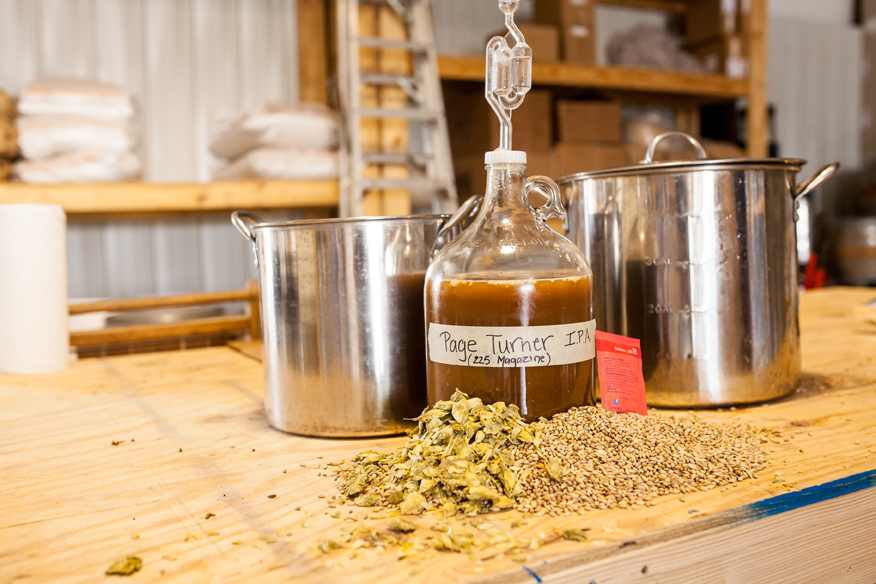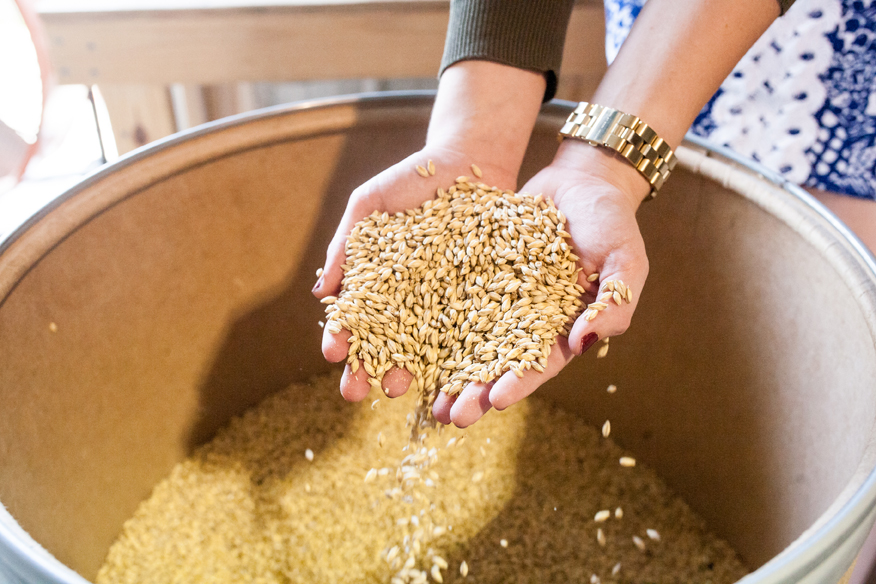
225 Adventures: Making beer with LA Homebrew
ABOVE: The Page Turner IPA the author brewed at LA Homebrew. Photos by Kristina Britt

Anyone can make beer.
That’s what Donovan McClelland tells me over and over. The manager of homebrew and winemaking shop LA Homebrew, McClelland is helping me brew my own American pale ale at the store.
A monkey could make beer, he insists. And yes, even me, the girl so untalented in the kitchen that she may have burned Pop-Tarts.
|
|
McClelland is a walking beer encyclopedia, the kind of guy who can talk for hours about the beverage’s history. He says beer has saved the world several times. (Google this. It’s kind of true.) As he talks, I can’t stop my eyes from wandering around the store.
LA Homebrew is basically a small grocery store for beer supplies. The walls are lined with little bags of lime, lemon and tangerine peel. There’s every berry puree imaginable—blueberry, raspberry, strawberry. There are rye whiskey barrels for aging beers and 140 kinds of grains. And a wall full of homebrew kits, containing everything you need to make more than 30 different types of beer.
“Anything you can think of, you can make,” McClelland says. He’s had customers make peanut butter and jelly beer, and bacon beer.


Investing in equipment for your first batch of beer runs about $100, he says, but materials for subsequent batches will only cost between $30-$50. One batch of beer is equivalent to about 8-9 six-packs, meaning homemade beer usually costs less than $1 a bottle.
All beer begins with four ingredients—malt, hops, yeast and water.
McLelland lets me choose what type of beer I’d like to make, and I pick my usual beer order, a pale ale. We start with the malt, which gives beer its color, flavor and sugar to be converted to alcohol. We mill it—grinding and crushing it to extract sugar and other key components. Then we add it to 150-degree water. This step, called mashing, is about flavor extraction, similar to steeping a giant bag of tea. At this stage, the beer smells kind of like bread or Cheez-It crackers. We bring the mixture to a boil.

Next we add hops—a bitter ingredient that balances the sweetness of the malt. The ratio of hops to malt determines how hoppy a beer is. As the hops boil, the transformation is instant—our brew smells like beer now. After boiling for an hour, we let it chill on ice.
Now, we sanitize every item that will come in contact with the beer post-boil, including the fermenter, bottles and caps. Skipping this step is the only way to screw up beer, McClelland says. Harmful bacteria can’t survive in the beer, but other bacteria that could spoil flavor can.
Once the beer has chilled, we pour it into the fermenter and add water and yeast, which is what will convert the sugars into alcohol.
Our work is done. Now it’s time to let the beer do its thing. Beer can be aged in a cool, dark place as short as a week or as long as three months. Darker beers need longer to let the flavors develop.
It’ll be about a month before my brew is ready, and McClelland encourages me to come back and try it. He tells me about the local beer brewing community—beer brewing clubs foster collaborative, not competitive, environments. Members trade brews and share ideas.
“Beer has never been something that’s reclusive. It’s an extremely open community,” he says. “The more craft beer drinkers are out there, the better off everyone is.”
As I leave the store, I’m already contemplating making my favorite kind of beer: pumpkin ale. Adding pumpkin puree while brewing will do the trick, McClelland tells me. So easy, anyone could do it.
MAKE YOUR OWN BEER
LA Homebrew does quarterly beer brewing classes. Visit lahomebrew.com to find out when the next one is. But if you can’t wait until then, head to the shop at 7987 Pecue Lane, Suite 7-G, to pick up a brewing kit and ask the friendly homebrewers your questions.
|
|
|

